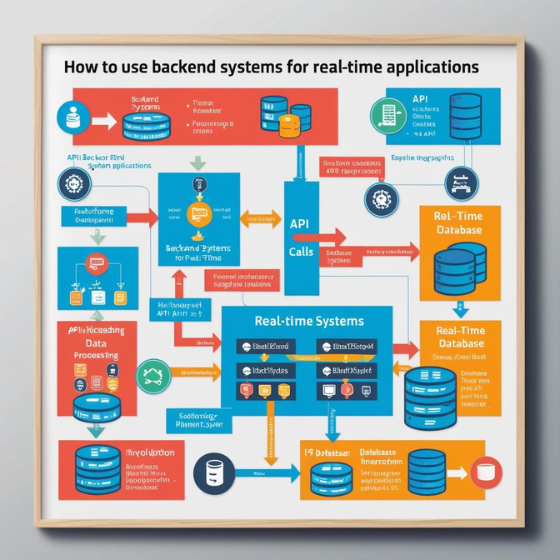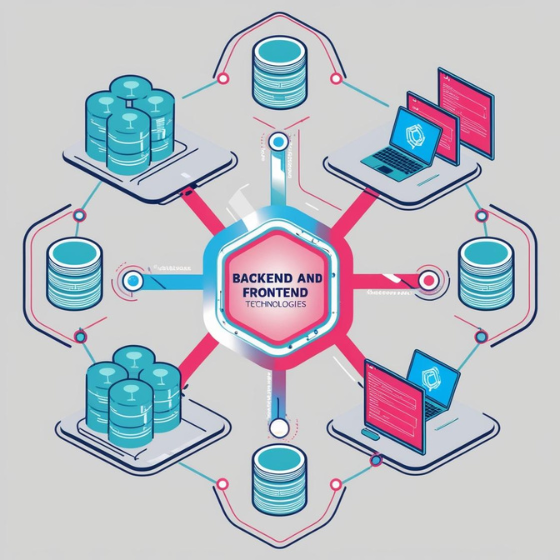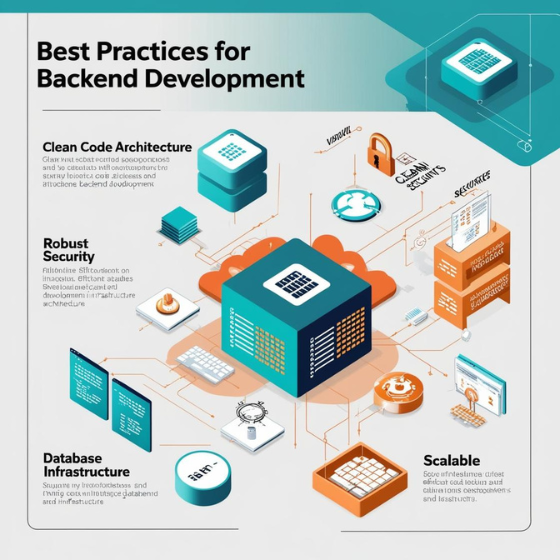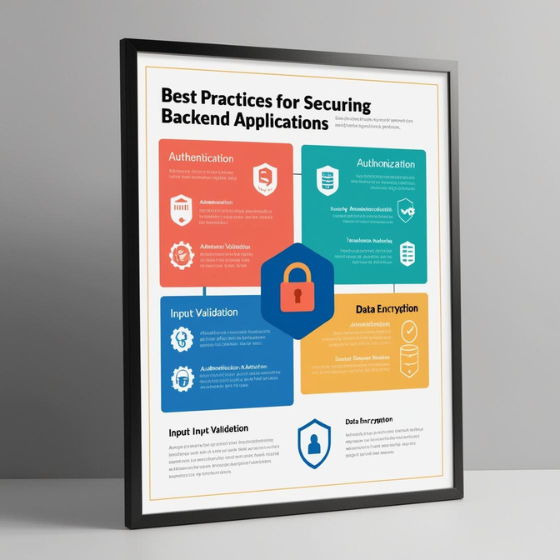Introduction: The Importance of Real-Time Applications
Did you know that 54% of consumers expect real-time communication from businesses? Real-time applications are no longer a luxury—they’re essential for modern digital experiences. From live social media feeds and messaging apps to real-time financial data updates, businesses must adapt to the growing demand for instant data processing. So, how do you use backend for real-time applications? In this blog, we’ll explore the technologies, strategies, and best practices to integrate backend systems for real-time experiences that engage users and enhance performance.
What Are Real-Time Applications?
Before diving into backend solutions, it’s important to understand what real-time applications are and why they matter.
Key Features of Real-Time Applications:
- Instantaneous Data Processing: Data is updated and delivered to users instantly.
- Low Latency: Information is transmitted without delays, ensuring immediate access.
- Constant Updates: Users receive updates in real-time without refreshing the page.
Common Examples of Real-Time Applications:
- Social Media Feeds: Real-time updates on posts, likes, and comments.
- Messaging Apps: Instant messaging and notifications.
- Online Games: Real-time interactions between players.
- Collaborative Tools: Simultaneous document editing by multiple users.
Real-time capabilities are critical for businesses aiming to deliver seamless, interactive experiences to their users. But the question is: How do you achieve this at scale?
How to Use Backend for Real-Time Applications
The backend is the backbone of any real-time application. It handles data processing, user authentication, and communication with the frontend. To successfully build and deploy real-time applications, you need to focus on several key backend components.
1. Real-Time Data Processing with Stream Technologies
For real-time systems, handling large volumes of data efficiently is crucial. Stream processing technologies allow you to process incoming data in real-time and push it to users immediately.
- Message Queues: Message brokers such as RabbitMQ, Apache Kafka, and AWS Kinesis enable asynchronous communication between different services. They handle high-throughput data and ensure reliability.
- Stream Processing: Tools like Apache Flink or Apache Storm process large amounts of data quickly. These tools are especially useful when dealing with real-time analytics or event-driven applications.
By using these technologies, backend systems can process data as it arrives and immediately push it to the frontend.
2. Bidirectional Communication with WebSockets
Unlike traditional HTTP requests, WebSockets allow for a constant, open connection between the client and server. This two-way communication channel is ideal for real-time applications because it reduces latency and allows instant updates.
- WebSockets Benefits: They offer faster communication, allowing servers to push updates to clients instantly, without clients needing to request them.
- Common Use Cases: Messaging apps, live notifications, and real-time collaboration tools.
Switching from HTTP-based communication to WebSockets can significantly improve your application’s real-time capabilities.
3. Real-Time Databases for Faster Data Handling
For real-time applications, it’s important to store and retrieve data quickly. Traditional relational databases often struggle with high-throughput, low-latency data access. Therefore, you should consider using NoSQL databases or in-memory stores.
- NoSQL Databases: MongoDB, Cassandra, and CouchDB are well-suited for real-time applications due to their ability to handle unstructured data and perform at high speeds.
- In-Memory Databases: Tools like Redis are ideal for storing frequently accessed data because they offer very fast read/write speeds.
By choosing the right database technology, you can ensure that your real-time application performs optimally, even under high traffic conditions.
4. Scalable Backend Infrastructure
Real-time applications must scale to handle a large number of simultaneous users without compromising performance. To achieve this, your backend infrastructure should be flexible and scalable.
- Horizontal Scaling: This means adding more server instances to handle increased traffic. Tools like Kubernetes and Docker help automate and manage the scaling process.
- Load Balancing: Distributing incoming traffic evenly across servers ensures that no single server is overwhelmed. Tools like NGINX and HAProxy can help with load balancing.
- Cloud-Based Solutions: Platforms such as AWS, Google Cloud, and Azure offer scalable infrastructure solutions that automatically adjust based on demand.
With a well-designed backend architecture, your real-time application can support thousands—or even millions—of users simultaneously.
5. Managing Latency and Improving Performance
Real-time applications require extremely low latency to provide a seamless user experience. Reducing latency involves optimizing both your backend and network infrastructure.
- Edge Computing: Process data closer to the user, reducing the time it takes to transmit information between servers and clients.
- Caching: Use CDNs (Content Delivery Networks) and caching strategies to store static content close to the user, speeding up access to frequently requested data.
By focusing on reducing latency, you ensure that your real-time application remains responsive even during peak traffic.
Challenges in Using Backend for Real-Time Applications
Building real-time applications comes with its own set of challenges. Let’s look at some of the main hurdles:
1. Data Consistency and Synchronization
Maintaining data consistency across distributed systems can be difficult in real-time applications. Conflicting updates may occur when multiple users are interacting with the same data simultaneously.
- Eventual Consistency: Many real-time systems adopt eventual consistency, where data is eventually synchronized across all users, even if there is a delay in consistency.
- Conflict Resolution: Implement strategies like version control or prioritizing updates to resolve conflicts and maintain system integrity.
2. Security Considerations
Real-time applications handle a lot of sensitive data, making them prime targets for cyberattacks. It’s crucial to implement security best practices to protect both user data and system integrity.
- Encryption: Encrypt all data in transit (using SSL/TLS) to prevent unauthorized access.
- Authentication: Use OAuth or JWT for secure user authentication and authorization.
3. Handling High Traffic Loads
Real-time systems often face unpredictable traffic spikes. To avoid system failure, ensure that your backend is capable of handling these surges.
- Auto-Scaling: Use cloud-based solutions that automatically scale your infrastructure based on real-time demand.
- Caching: Implement caching mechanisms to reduce load on your backend and improve performance.
Best Practices for Building Real-Time Applications
To build a reliable and scalable real-time application, follow these best practices:
- Monitor Performance: Continuously track backend performance to identify potential issues before they become critical.
- Ensure Scalability: Plan your backend architecture to handle future growth and increased user demand.
- Use Asynchronous Processing: Asynchronous tasks reduce the load on your backend, allowing it to process more requests efficiently.
- Test for Reliability: Regularly test your application under heavy load conditions to ensure it performs well during peak usage.
Conclusion: Future-Proof Your Real-Time Application
Using backend for real-time applications is an essential strategy for businesses looking to engage users and provide instant data updates. By leveraging technologies such as WebSockets, stream processing, and real-time databases, you can build applications that scale, perform well, and deliver real-time experiences. However, it’s crucial to address challenges like data consistency, security, and scalability to ensure the long-term success of your system.
At Sodio, we specialize in backend development and can help you integrate real-time features into your applications. Whether you’re building a messaging platform, live collaboration tool, or any other real-time system, our team has the expertise to bring your vision to life.
Ready to build a real-time application? Contact us today and let Sodio help you create a seamless, scalable solution tailored to your business needs.







